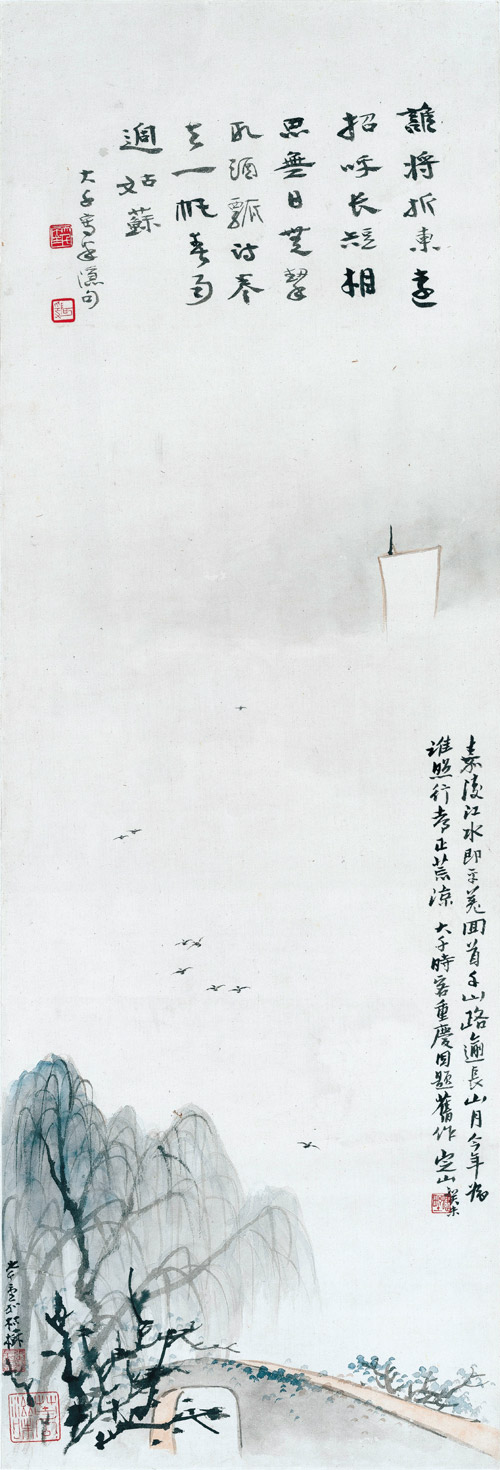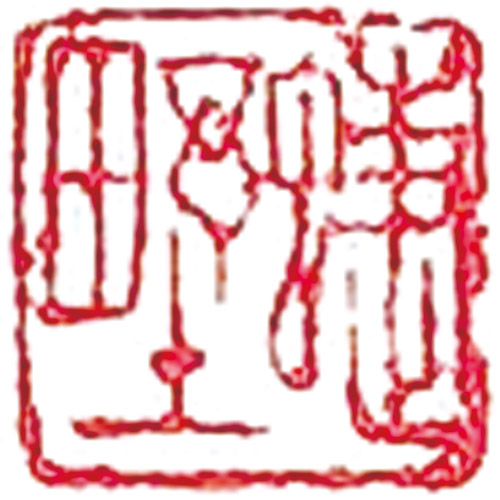Dear readers, With the launch of e-newsletter CUHK in Focus, CUHKUPDates has retired and this site will no longer be updated. To stay abreast of the University’s latest news, please go to https://focus.cuhk.edu.hk. Thank you.
A Glimpse into the World of Chang Dai-chien
Chang Dai-chien (1899–1983) is one of the most internationally well-known Chinese artists of the 20th century. Originally named as Chang Yuan (‘Yuan’ means ‘ape’ in Chinese), the legendary artist had always thought of himself as the incarnation of an ape, which his mother had dreamt of when she was heavy with him. Throughout his entire life, Chang had numerous adventurous encounters. He had been kidnapped by the bandits when he was young and became a monk after the death of his fiancée. It was then when Chang obtained his pseudonym ‘Dai-chien’, which referred to ‘the universe with a thousand regions’ in Buddhist belief.
Clad in a long robe with a walking stick held in his hand, the heavily bearded Chang Dai-chien had the appearance and elegance of an ancient scholar. The Sichuanese master spent most of his early years in Shanghai and Beijing where he acquired fame as a young artist. At the age of 43, he launched an expedition to Dunhuang and made meticulous copies of the Buddhist murals in the Mogao and Yulin caves. The experience not only advanced his skills in figurative paintings but also enabled him to take centre stage in the global art scene. Since then, he started to travel extensively to various countries in Asia, Europe, as well as the Americas. He settled in Taipei in his later years and was named one of the ‘Three Masters Crossing the Strait’, alongside Fu Xinyu (1896–1963) and Huang Junbi (1898–1991).
Chang was proficient in almost all genres of Chinese paintings, including landscapes, birds-and-flowers, and figures. He also excelled in calligraphy, seal carving and poetry writing. At the same time, he was a famous connoisseur of fine arts with remarkable networking abilities.
Chang was known for having spent a considerable time and effort to emulate the traditional techniques and styles of preceding artists. His reproduction of ancient paintings had successfully deceived some of the most experienced connoisseurs. Nevertheless, the reproduction of classical Chinese paintings is never associated with the contemporary understanding of ‘forgery’. Artists take pride in completing a careful reproduction of the original piece as the achievement is evidence of the artists’ virtuosity. The Set of Four Landscapes by Chang Dai-chien offers an example of how the artist was able to master traditional techniques and styles to eventually find his own voice.
In the Four Landscapes, sceneries of Jiangnan (southern Yangtze) are vividly depicted with a unique composition. Dedicated to the artist’s friend as a gift, this set of artwork was created in the summer of 1932 in Zhejiang. After 31 years, in 1963, the paintings were once again presented to Chang, who decided to retouch them with new colours and inscriptions.
The landscape paintings demonstrate the distinguished skills of Chang in emulating the techniques and styles of Shi Tao (1642–1707), a renowned Chinese artist of the early Qing dynasty who was also known as the ‘Monk of Bitter-gourd’. Unfettered by tradition, Chang constantly strived for breakthroughs. His artistic accomplishment was beautifully exemplified in one of the Four Landscapes, ‘The Silhouette of Boat Sail in Suzhou’.
In the foreground of the painting, a traditional arch bridge commonly seen on the southern bank of Yangtze is obscured by the branches of barren trees and weeping willows. Halfway up the painting shows a flock of wild geese crossing the sky. From where the water and sky meets emerges the silhouette of a white boat sail. The extensive void in the painting can be interpreted as mist or fog, or the combined hue of the water and clouds, which renders the typical dream-like ambience of Jiangnan veiled in spring drizzles. A red seal in the left bottom corner reads ‘taste of bitter-gourd’, which not only suggests the artist’s allusion to the style of Shi Tao but also shows Chang’s confidence in mastering the techniques of Shi in his early years. A line in the bottom left corner reads ‘barren tree added by Da-chien’ with the artist’s ‘Chang Yuan changshou (longevity)’ seal, indicating the re-touching in 1963 when the artist was already over 60 years old.
The Set of Four Landscapes is also graced with colophons of connoisseur Xu Bangda (1911–2012) and renowned painter-calligrapher Chen Dingshan (1896–1989). For the piece shown here, a colophon by Chen along the right border records his reunion with the artist as an old friend in Chongqing during 1943. The theme of friendship resonates with a poem beautifully composed and inscribed by the artist on top of the painting, which depicts the sorrow of parting and memories of a distant friend.

Chang Dai-chien (Zhang Daqian, 1899–1983)
Set of Four Landscapes
Currently exhibited in the Spirit of Sharing: Recent Acquisitions of the Art Museum exhibition in Gallery II of the Art Museum
1932, retouched on 1963
Each 89.7 x 30.7 cm
Tetraptych, ink and colour on paper
Gift of Leepo Cheng Yu and Ta Pei Cheng in memory of their parents
Mr. Hok Chow Cheng and Mu Cheng Hsu
|
‘Dai-chien’ |
‘Chang Yuan’ |
‘Taste of bitter-gourd’ |
|
‘Chang Yuan changshou’ (longevity) |
‘Dieye’ (courtesy name of Chen Dingshan) |
This article was originally published in No. 487, Newsletter in Nov 2016.




